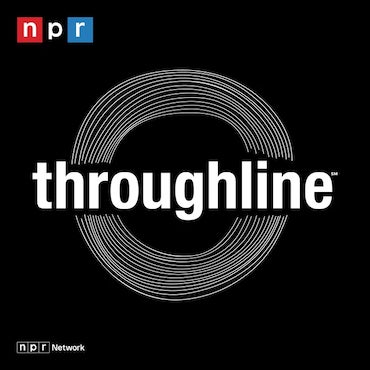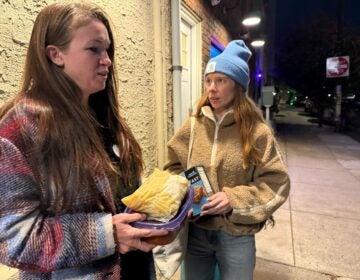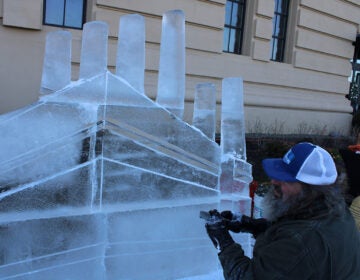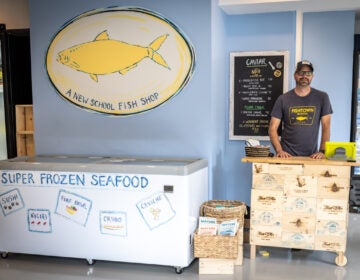Trying to be part of the solution in Philadelphia’s Fishtown
I believe that a plurality of opinions and experiences makes the neighborhood strong. I don't have any interest in living on a block where every person is some version of me.
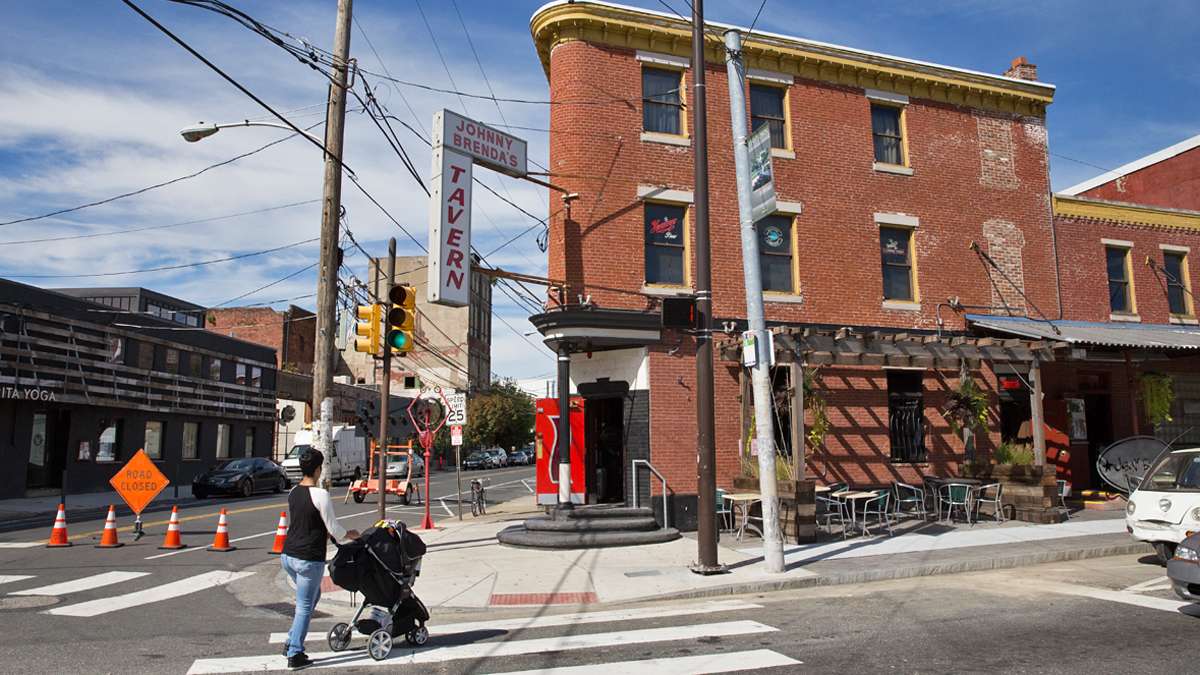
. (Lindsay Lazarsky/WHYY, file)
Speak Easy is examining issues of neighborhood development in Philadelphia. How can city leaders help us achieve a fair future for long-term residents and newcomers alike? Seeking diverse perspectives on these issues, NewsWorks is hosting a public forum, “Philadelphia Neighborhoods in Flux,” on April 21 at WHYY studios. Registration is free at whyy.org/speakeasy.
—
The check I wrote for $2,700 seemed impossibly large. I had borrowed the money from my uncle, although he was hardly rich, to make first, last and security on a two-bedroom rental in Fishtown. It was 2007, and in those days they would give an old jabroni with a college degree a decent job. I was checking out Mt. Airy, East Falls, the river wards. Even pre-Piazza, I was priced out of NoLibs.
It had plenty of parking and was across from a trash-strewn vacant lot. Three sets of shoes were thrown over the overhead wires. The unit next door was vacant. A junkie squatted there for a while before it was sealed. The back yard was overgrown and dropped sweet berries on my back patio. They exploded, rotted and caused mind-boggling fly colonies.
My car was broken into twice. One time, my neighbor went outside wielding a knife and threatened whoever it was. My parents knew only half the story.
I didn’t know anything about Fishtown in the early ’90s, but I was told it was “an easy place to get off 95 and score drugs.” The community still battled with drug houses, bad ones. There was a dealer on my block.
And it was my home. My ‘dollhouse’ was genuinely cute, 672 square feet of tiny corners and impossible steep steps. I smiled when I returned from work travel. I loved it.
Trying to be part of the solution
Two older ladies on my street, Betty and Mary, held court on the stoop every morning and drank coffee. They watched me come and go, observed boys drop me off after dates, asked if I was okay when they didn’t see me for a week or so. My Italian neighbor didn’t speak any English. I must have seemed like a friendly face, because we used hand gestures when he asked for my help picking out a blood pressure cuff at CVS. He smoked like a chimney and stopped to wave every time he saw me for six years.
I showed up at some Fishtown Neighbors Association meetings and eventually a neighborhood cleanup. I announced that “my lot” would be one of the locations to address. Eventually my 3-1-1 calls got through to the Community Life Improvement Program. There now are two homes on the lot.
I joined the board of directors for FNA. A periodic cleanup turned into meetings five, sometimes six, nights a week. There was so much work to be done. I was 27 when I became board president. God help everyone in 19125. I was eating it up.
I never told them, but those old ladies on my street were so important to me. They were the glue on my street, the eyes and ears. I would show up to zoning meetings and politely insist that not all renters don’t care, a lot of them care. Maybe I was an anomaly — but the bottom fell out of the market, and there was no way I was going to buy. But that didn’t mean I wasn’t invested in a life in Fishtown. I met couples and families and single people and roommates who felt the same way. I knew there were bad renters, some who were transient and didn’t care at all, but there were life-long Fishtowners who don’t shovel their walks either. I was living next to one.
The words “yuppie” and “lifer” became harder to avoid as the infill continued. The local message board, Fishtown.us, became ground zero for some of the demographic tensions. Some of it was legitimate, but most seemed to be a fear of change from both sides. A lot of days I couldn’t figure out if responding was helping or hurting … I still can’t tell. Every once in a while, a long-term resident would pipe up to say that they see genuine care in new residents; maybe even trust them. I would chime in about my ladies, and thenit would go quiet for a while.
The neighborhood began to get more expensive. High-end housing was growing faster than the nonsense in the old vacant lot — restaurants, bars, eight homes here, 12 homes there with parking, converting this warehouse and that one. Sugarhouse came, and suddenly developers realized that riverside Fishtown had some land. The meetings continue.
Protecting the Bettys and Marys
I fear that we are headed away from socioeconomic diversity rather than towards it. In my heart of hearts I believe that a plurality of opinions and experiences makes the neighborhood strong. I don’t have any interest in living on a block where every person is some version of me. The people who have been in the neighborhood for years have context, knowledge, memories that I will never, ever possess. I am less without them.
My civic doings led me to work with a group trying to get their hands around AVI and the relief measures that were being proposed. I wasn’t paying a lick of property taxes, but I want to make sure the Bettys and Marys of the neighborhood could stay. More meetings, a press conference at city hall, policy papers, passionate email debate with civic leaders from across the city — eventually data sets were handed over for analysis. The report is almost two years old and a lot of the functional, structural problems with the valuations remain.
When I ruminate on the ability of the poor and working poor to stay in their homes — and the fact that AVI still needs real attention — I am nauseated. We aren’t building the right housing fast enough, and new market-rate development doesn’t require low-income units, although I think it should. The programs to keep folks in their homes need to be more robust and diverse. I’ll be the first to admit that Fishtown may not benefit from any future policy changes.
Mary fell ill and passed away in 2013. Betty was moved to assisted living shortly thereafter. Their homes were knocked down or flipped. I eventually had some pennies to rub together and, in 2014, bought a home two blocks away from the one I rented for seven years. I have a good 40 years or so to hold court on my stoop.
—
Jill Betters has spent over a decade in the Philadelphia area, but she ended up in Fishtown by accident. She has been involved with the Fishtown Neighbors Association since 2010, both as a renter and a homeowner, and was a board member for several years, including serving as both the president and the corresponding secretary in 2012.
She is still actively involved with FNA, running a fundraiser every year as well as operating the infamous @fishtown Twitter account.
Jill has served on several nonprofit boards, including StandUp for Kids Philadelphia and Philadelphia Crosstown Coalition as founding vice-chair. As FNA’s delegate to the PCC, Jill was passionately involved in the civic-led fight for AVI fairness and property tax relief. She can’t seem to sit still and is frequently involved in ad hoc projects, currently pursuing a historic designation for the Delaware Generating Station adjacent to Penn Treaty Park.
Jill is currently a marketing manager at CertainTeed Corporation and can be found sporadically tweeting from her personal account @billjetters.
WHYY is your source for fact-based, in-depth journalism and information. As a nonprofit organization, we rely on financial support from readers like you. Please give today.
